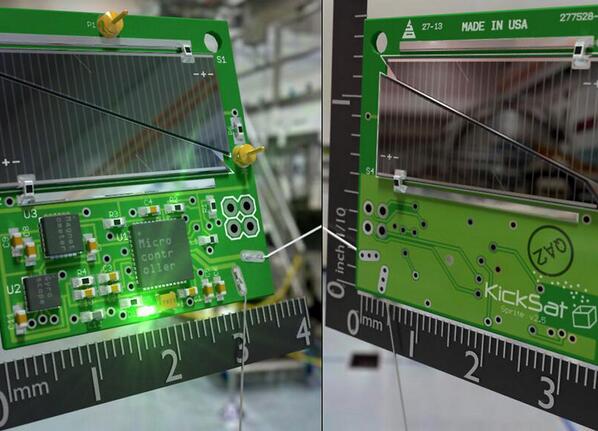Conversation started Apr 21, 2014 at 18:13.
Apr 21, 2014 18:13
@TildalWave - Re "Why did Armstrong pilot the LM, when Aldrin was tasked as Lunar Module Pilot?" I've reviewed the flight logs. There's no indication that Armstrong took over after the alarms. From what I can tell, Aldrin was in charge only during the automated part of the descent. Moreover, this is where I work. I worked at MOD for 12 years before transitioning to Engineering. That the commander is responsible for the first "X", whatever "X" may be, is just how NASA works.
@DavidHammen well there were two anomalies before the landing, the alarm and the landing site was not suitable ... like I said, I'm not arguing for or against what I wrote, but some clear quote on that would be nice, there was plenty of confusion over who gets to do what (remember, Aldrin was supposed to be the 1st one to step on the Moon)
this page: doneyles.com/LM/Tales.html kinda reads to me that Aldrin was in charge of the flight computer and the landing was supposed to be on AUTO but: MET 102:43:08 (650 feet), after deciding that he could not stop short of the crater, Armstrong flipped the autopilot mode switch from AUTO to ATT HOLD to take manual control of the LM's attitude.
@DavidHammen Well yes, that's what I'd think too, but Armstrong took over after anomalous readings and all ... there were all kinds of alarms firing before that, and they were off on the radar ... so that's the "executive decision" then. The page does mention that Aldrin was on the right (comp) and Armstrong on the left (manual) from the start. So it should actually be "why did Armstrong land it manually", not "why didn't Aldrin pilot it"
1 hour later…
Apr 21, 2014 20:16
@DavidHammen I've updated my answer, clarifying things a bit. I hope that's acceptable now, but I'm afraid I don't have the time now to proof-read it and the included sources again. It'll have to wait till tomorrow. If you wanna write a new answer let me know and I'll delete mine. It's probably a bit awkwardly written anyway, there's all kinds of things that were going on during that landing.
Apr 21, 2014 20:59
6 hours later…
Apr 22, 2014 03:05
@TildalWave - Did the Eagle have an automated landing capability? Its hard to prove a negative, but I suspect not. I can't find any indications of such automation. It doesn't make sense given the capabilities of the late 1960s. An unmanned probe, sure. If it landed with one leg one a rock and tipped over, bye bye several million 1960s dollars. No big loss. If an automated Eagle did the same it would have been national shame.
Apr 22, 2014 04:05
@DavidHammen princeton.edu/~stengel/LM.pdf the introduction talks about the automated guidance of what's referred to as "digital autopilot". It adds that it was incapable of sensing and avoiding obstructions or changing the landing site like it happened during Apollo 11. Like I said, I did edit my answer to mention that Armstrong was always to land it in case a manual override was needed and that they never changed their stations (and I add a reference for that)
To my understanding they would enter programs per what was going on and always have an option to abort and take manual control of the powered descent
and the ATT HOLD mode that Armstrong landed on was still with the Apollo Guidance Computer on, and assisting in a similar way to what now Soyuz has, i.e. maintaining attitude on its own

The Apollo Guidance Computer (AGC) was a digital computer produced for the Apollo program that was installed onboard each Apollo Command Module (CM) and Lunar Module (LM). The AGC provided computation and electronic interfaces for guidance, navigation, and control of the spacecraft. The AGC had a 16-bit word length, with 15 data bits and one parity bit. Most of the software on the AGC was stored in a special read only memory known as core rope memory, fashioned by weaving wires through magnetic cores, though a small amount of read-write core memory was provided.
Astronauts communicated w...

The Apollo Primary Guidance, Navigation and Control System (PGNCS) (pronounced pings) was a self-contained inertial guidance system that allowed Apollo spacecraft to carry out their missions when communications with Earth were interrupted, either as expected, when the spacecraft were behind the Moon, or in case of a communications failure. The Apollo Command Module (CM) and Lunar Module (LM), were each equipped with a version of PGNCS. PGNCS, and specifically its computer, were also the command center for all system inputs from the LM, including the Kollsman Instrument built Alignment Optic...
Conversation ended Apr 22, 2014 at 4:10.
Who was supposed to pilot Apollo 11 LM and land it on the Moon?
Apr '1421
Apr '1422
Participants
- TildalWave 71%
- David Hammen 23%
- Stack Exchange 4%
all times are UTC
